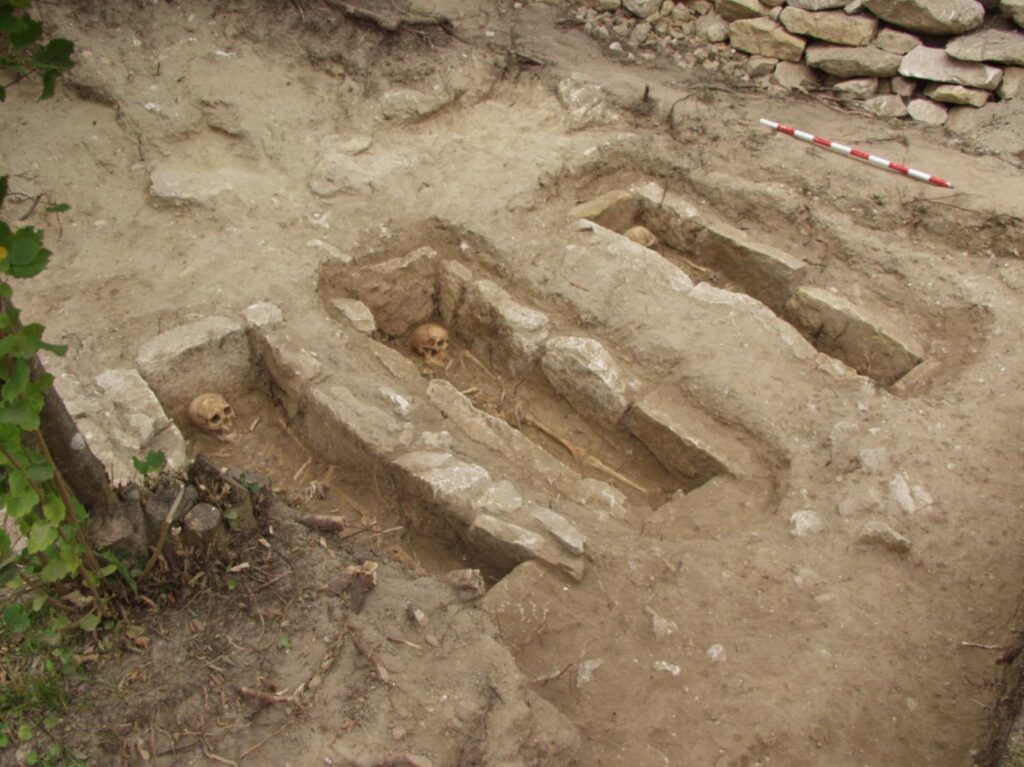Study reveals isolation, endogamy and pathogens in Las Gobas, an early medieval Spanish community
An archaeogenetic study sheds new light on the isolated medieval community Las Gobas in northern Spain. Besides isolation and endogamy, the researchers have also identified the variola virus which can offer a new explanation on how smallpox entered Iberia.

Researchers from Sweden and Spain have conducted a comprehensive archaeogenetic study on a community that lived on the border between the northern Christian kingdoms and Al-Andalus during the early Medieval period. This dynamic era, especially in the Iberian Peninsula, was marked by religious competition, power struggles, and significant human mobility—factors that shaped the foundation of modern Europe.
The study, published in the journal Science Advances, focused on Las Gobas, a rural site in northern Spain’s Burgos province, near the village of Laño. The community existed from the mid-6th to the 11th century and is notable for its church and living areas carved into caves. The site also provides evidence of violence, likely from sword blows, found on some of the buried individuals. Forty-one burials were excavated, and 39 of them were subjected to archaeogenetic analysis.

The interdisciplinary research, led by Ricardo Rodríguez Varela from the Centre for Palaeogenetics (CPG)* in Stockholm integrated genetic, archaeological, and historical data to reveal the presence of an endogamous community in northern Iberia that remained relatively isolated despite centuries of turbulent regional history.
“Our findings indicate that this community stayed relatively isolated for at least five centuries,” said Rodríguez Varela. Although Las Gobas is located just north of regions under Islamic rule, “we found relatively low levels of North African and Middle Eastern ancestry compared to other medieval individuals from the Iberian Peninsula, and we did not observe a significant increase in these ancestries after the Islamic conquest of Iberia,” he concluded.

Zoé Pochon, also from CPG, highlighted the discovery of several understudied pathogens in Las Gobas human remains. “For example, Erysipelothrix rhusiopathiae, a bacterium that causes skin disease through contamination of open wounds, often infects humans via domestic animals, suggesting that animal-keeping was important for this community.”

She also identified the variola virus, the causative agent of smallpox, in an individual from one of the more recent burials. This specific strain is similar to those found in Scandinavia, Germany, and Russia, underscoring the pan-European presence of smallpox during the Middle Ages.
Anders Götherström, the senior author of the study and also based at CPG, emphasized the exhaustive nature of their research: “It is amazing how much information we were able to gather on this group of people through our archaeogenetic investigation.” He further explained, “An endogamous group, familiar with violence, appears to have established itself in Las Gobas during the 6th or 7th century. By the 10th century, smallpox seems to have affected Las Gobas, likely spreading through Europe rather than via Islamic routes, as was previously theorized for how smallpox entered Iberia.”
This study, published in the journal Science Advances, provides new insights into the complex social, genetic, and health dynamics of a long-isolated community in early Medieval Spain.

Publication Details: The study is published in Science Advances, DOI: 10.1126/scieadv.adp8625
* The Centre for Palaeogenetics (CPG) is a joint venture between Stockholm University and the Swedish Museum of Natural History. The overall objective of the centre is to bring researchers from different disciplines, such as biology, archaeology and geology, together into a state-of-the-art research environment dedicated to ancient DNA analyses. Read more https://palaeogenetics.com/
Bibliographic information:
Ricardo Rodríguez-Varela et al., Five centuries of consanguinity, isolation, health, and conflict in Las Gobas: A Northern Medieval Iberian necropolis, Sci. Adv.10,eadp8625(2024), DOI:10.1126/sciadv.adp8625
Press release from Stockholm University.



